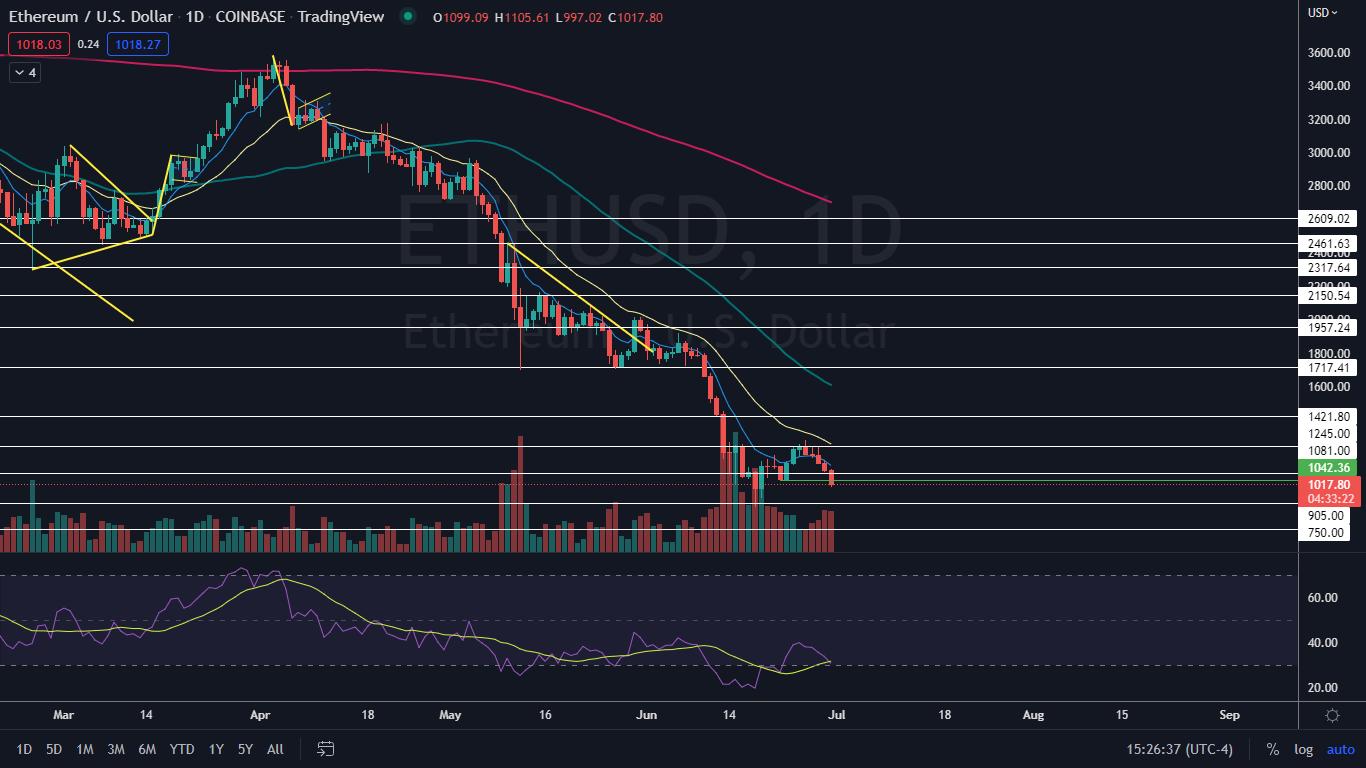
Ethereum (CRYPTO: ETH) was sliding more than 7% lower on Thursday, trading dangerously close to the important $1,000 psychological level, which the crypto tested as support on June 18 and June 19 but bounced.
The more times a stock or crypto tests an area of either support or resistance, the weaker the area becomes, which could be bad news for bullish investors. The decline on Thursday also negated Ethereum’s uptrend, suggesting the crypto may begin a new downtrend.
A downtrend occurs when a stock consistently makes a series of lower lows and lower highs on the chart.
The lower lows indicate the bears are in control while the intermittent lower highs indicate consolidation periods.
Traders can use moving averages to help identify a downtrend with descending lower timeframe moving averages (such as the eight-day or 21-day exponential moving averages) indicating the stock is in a steep shorter-term downtrend.
Descending longer-term moving averages (such as the 200-day simple moving average) indicate a long-term downtrend.
A stock often signals when the lower low is in by printing a reversal candlestick such as a doji, bullish engulfing or hammer candlestick. Likewise, the lower high could be signaled when a doji, gravestone or dragonfly candlestick is printed. Moreover, the lower lows and lower highs often take place at resistance and support levels.
In a downtrend the "trend is your friend" until it’s not and in a downtrend, there are ways for both bullish and bearish traders to participate in the stock:
- Bearish traders who are already holding a position in a stock can feel confident the downtrend will continue unless the stock makes a higher high. Traders looking to take a position in a stock trading in a downtrend can usually find the safest entry on the lower high.
- Bullish traders can enter the trade on the lower low and exit on the lower high. These traders can also enter when the downtrend breaks and the stock makes a higher high, indicating a reversal into an uptrend may be in the cards.
Want direct analysis? Find me in the BZ Pro lounge! Click here for a free trial.
The Ethereum Chart: When Ethereum fell below the June 22 and June 23 higher low near the $1,042 mark, the crypto negated the uptrend it had started trading in on June 19. If a downtrend is about to occur, it will be confirmed once Ethereum rebounds upwards to print a lower high under $1,280.
- Bearish traders who aren’t already in a position can watch for a reversal candlestick to print under that level in order to take a short position. Bullish traders will want to see Ethereum bounce up again from near the $1,000 level, which could create a bullish triple bottom pattern if the area holds as support.
- The plunge on Thursday was taking place on higher-than-average volume, which favors the bears because it indicates a degree of fear selling and short interest. At press time, Ethereum’s volume was measuring in at about 272,000 on Coinbase compared to the 10-day average of 234,418.
- If Ethereum closes the 24-hour trading day near its low-of-day price, the crypto will print a bearish Marubozu candlestick, which could indicate lower prices will come again during Friday’s session. The second most likely scenario is that Ethereum forms an inside bar to consolidate, which would lean bearish for Saturday’s 24-hour session.
- Ethereum has resistance above at $1,081 and $1,245 and support below at $1,000 and $905.

Photo: Raggedstone via Shutterstock







